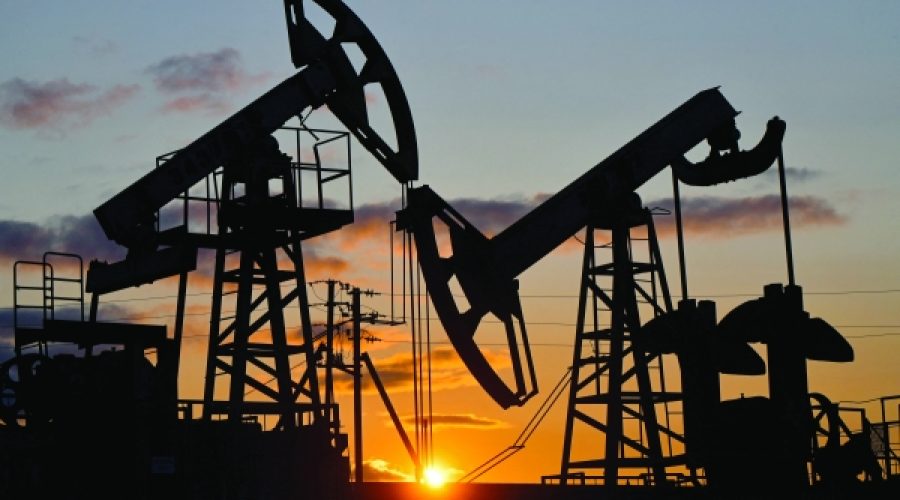قیمت نفت در آستانه دیدار زلنسکی و ترامپ در لبه پرتگاه: پیامدهای کلیدی برای سرمایهگذاران و مشاغل در عمان
لندن - قیمت نفت روز دوشنبه ثابت ماند، زیرا معاملهگران منتظر نتیجه دیدار کلیدی بین دونالد ترامپ، رئیس جمهور آمریکا، و ولودیمیر زلنسکی، رئیس جمهور اوکراین، با هدف دستیابی به توافق صلح برای پایان دادن به مرگبارترین درگیری اروپا در هشت دهه گذشته هستند.
در ساعت 08:47 به وقت گرینویچ، قیمت معاملات آتی نفت خام برنت $65.87 در هر بشکه بود، در حالی که نفت خام وست تگزاس اینترمدیت (WTI) با 9 سنت یا 0.14% افزایش به $62.89 در هر بشکه رسید.
آخر هفته، ترامپ با ولادیمیر پوتین، رئیس جمهور روسیه، در آلاسکا دیدار کرد، جایی که به نظر میرسید هر دو رهبر در اولویت قرار دادن یک توافق صلح به جای آتشبس به عنوان گام اولیه، همسو شدهاند.
اوله هانسن، رئیس استراتژی کالا در ساکسو بانک، خاطرنشان کرد: «تمرکز بازار اکنون به نشست امروز واشنگتن برای نشانههایی از توافقی که در نهایت میتواند عرضه نفت خام و گاز را افزایش دهد، معطوف شده است.» وی افزود که در هفته منتهی به ۱۲ آگوست، سفتهبازان اولین موقعیت فروش خالص ترکیبی را در WTI (CME و ICE) ثبت کردند و قیمتها را در برابر هرگونه غافلگیری صعودی آسیبپذیر کردند.
هانسن در ادامه اظهار داشت: «من باور ندارم که بازار نفت به طور کامل سود حاصل از صلح را پذیرفته باشد، که این امر میتواند به طور بالقوه باعث کاهش بیشتر قیمت نفت خام و گاز اروپا شود.»
پیش از این در جلسه، قیمت نفت خام پس از اظهارات پیتر ناوارو، مشاور تجاری کاخ سفید، که از خرید نفت خام روسیه توسط هند به دلیل احتمال تأمین مالی تلاشهای جنگی مسکو در اوکراین انتقاد کرده بود، افزایش یافت. ناوارو اظهار داشت: «هند به عنوان یک مرکز تهاتری جهانی برای نفت روسیه عمل میکند و نفت خام تحریم شده را به صادرات با ارزش بالا تبدیل میکند و در عین حال دلار مورد نیاز مسکو را تأمین میکند.»
پریانکا ساچدوا، تحلیلگر ارشد بازار در کارگزاری فیلیپ نوا، اظهار داشت که اظهارات تند ناوارو در مورد واردات نفت خام روسیه توسط هند، همراه با مذاکرات تجاری به تعویق افتاده، نگرانیها را در مورد اینکه جریان انرژی علیرغم بهبود چشمانداز صلح در اوکراین، همچنان درگیر تنشهای تجاری و دیپلماتیک است، دوباره برانگیخته است.
روز شنبه، ترامپ اعلام کرد که اگرچه در حال حاضر نیازی به اعمال تعرفههای تلافیجویانه علیه کشورهایی مانند چین به دلیل خرید نفت روسیه نمیبیند، اما چنین اقداماتی ممکن است «طی دو یا سه هفته» ضروری باشد و این امر نگرانیهای اولیه در مورد اختلال در عرضه نفت روسیه را کاهش داد.
چین همچنان بزرگترین واردکننده نفت جهان است و بزرگترین خریدار نفت روسیه محسوب میشود و پس از آن هند قرار دارد.
سرمایهگذاران همچنین به دقت اظهارات جروم پاول، رئیس فدرال رزرو، را در سمپوزیوم آتی جکسون هول در مورد مسیر آینده کاهش نرخ بهره ایالات متحده زیر نظر دارند، که میتواند به طور بالقوه بازارهای سهام را به رکوردهای جدید برساند.
—رویترز
تحلیل ویژه از عمانت | بازار عمان را کشف کنید
تغییرات ژئوپلیتیکی جاری و توافقات احتمالی صلح در اوکراین، سیگنالهایی را نشان میدهند قیمتهای نفت بیثبات در پیش است، با فشار نزولی احتمالی در صورت صلح منجر به افزایش عرضه. برای مشاغل در عمان، این به معنای تمرکز استراتژیک بر مدیریت هزینه و انعطافپذیری بازار بسیار مهم است، در حالی که سرمایهگذاران هوشمند باید تحولات دیپلماتیک را از نزدیک زیر نظر داشته باشید برای بهرهبرداری از نوسانات قیمت و تنشهای تجاری نوظهور، به ویژه در مورد واردکنندگان عمده مانند چین و هند.



